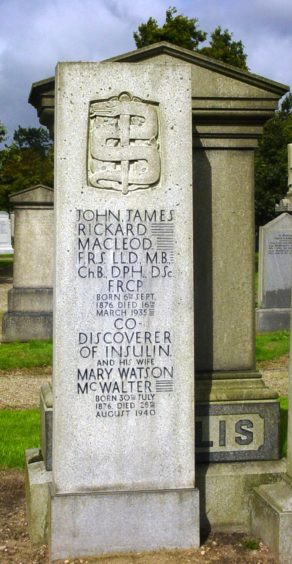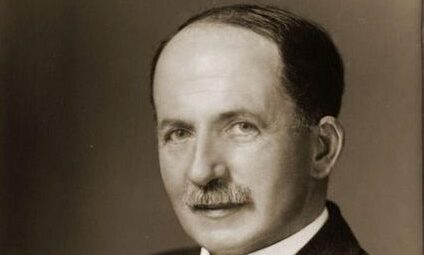A new voluntary organisation has been established in Aberdeenshire to help tackle the scourge of type 1 diabetes.
The JDRF group, based in Westhill, which met for the first time this month, is planning a series of events to commemorate the discovery of insulin in 1921 by a trio of scientists.
Among their number was John MacLeod, a former Aberdeen Grammar School pupil, who studied at Aberdeen University before going on to win the Nobel Prize.
And the Macleod Centenary Group has been set up to support JDRF in its mission to find a cure for type 1 diabetes.
It comprises a broad range of people across many organisations, including Aberdeen University and Aberdeen FC, who have pledged to mark the centenary by raising the profile of JDRF, awareness of type 1 diabetes and the significance of insulin.
Carol Kennedy, regional fundraiser in Scotland for JDRF, which is the world’s leading type 1 diabetes research charity, said it was important to recognise Mr MacLeod’s place in history and use his achievements as the catalyst for making new scientific breakthroughs in the future.
She told the Press and Journal: “We want to ensure that as many people as possible realise the vital contribution John MacLeod made in helping so many people with diabetes through his pioneering work with insulin.
“The charity exists to find a cure for type 1 diabetes and its many complications.
“At a global level, our volunteers and staff have already been responsible for raising more than £1 billion to support research.
“But we know there is still a lot of work to be done and the latest projections estimate an increasing number of young people are being diagnosed with this.
“It is a chronic condition, one which has a lifelong impact on those who are affected by it and their families.
“We want to spread the word and ensure we do all we can to search for solutions.
“We will be holding a series of meetings throughout the year leading up to when JDRF will be marking the anniversary in 2021.”
Type 1 diabetes is an autoimmune condition which cannot be prevented and is not linked to lifestyle factors.
People with the condition rely on multiple insulin injections or pump infusions every day just to stay alive.
It normally strikes children and stays with them for the rest of their lives. In the UK, it affects about 400,000 people in the UK, 29,000 of them children.
In Scotland, it impacts 32,000 people in Scotland, 6,000 of them children.
Further information is available at www.jdrf.org.uk.
The life and work of insulin pioneer and Nobel Prize winner John MacLeod

John James Rickard MacLeod was born in Dunkeld in Perthshire in 1876, but soon after his birth, his clergyman father, Robert, was transferred to Aberdeen and the family relocated.
He attended Aberdeen Grammar School and, after being recognised as an intellectually gifted youngster, entered Marischal College at Aberdeen University to study medicine.
MacLeod moved to Canada upon graduating and became director of physiology at Toronto University, where he became interested in research on patients with diabetes.
Insulin was developed during his time there in 1921, after he had engaged in groundbreaking work with students Frederick Banting and Charles Best.
Following their collaboration, MacLeod received a Nobel Prize along with Banting, although he and the latter subsequently fell-out over their rival claims of who had contributed most to the discovery.
He returned to Scotland in 1928 to become Regius Professor of Physiology at Aberdeen University and later became Dean of the University of Aberdeen Medical Faculty.
He died in 1935 and is buried in Aberdeen. There is also a plaque near his old house.
